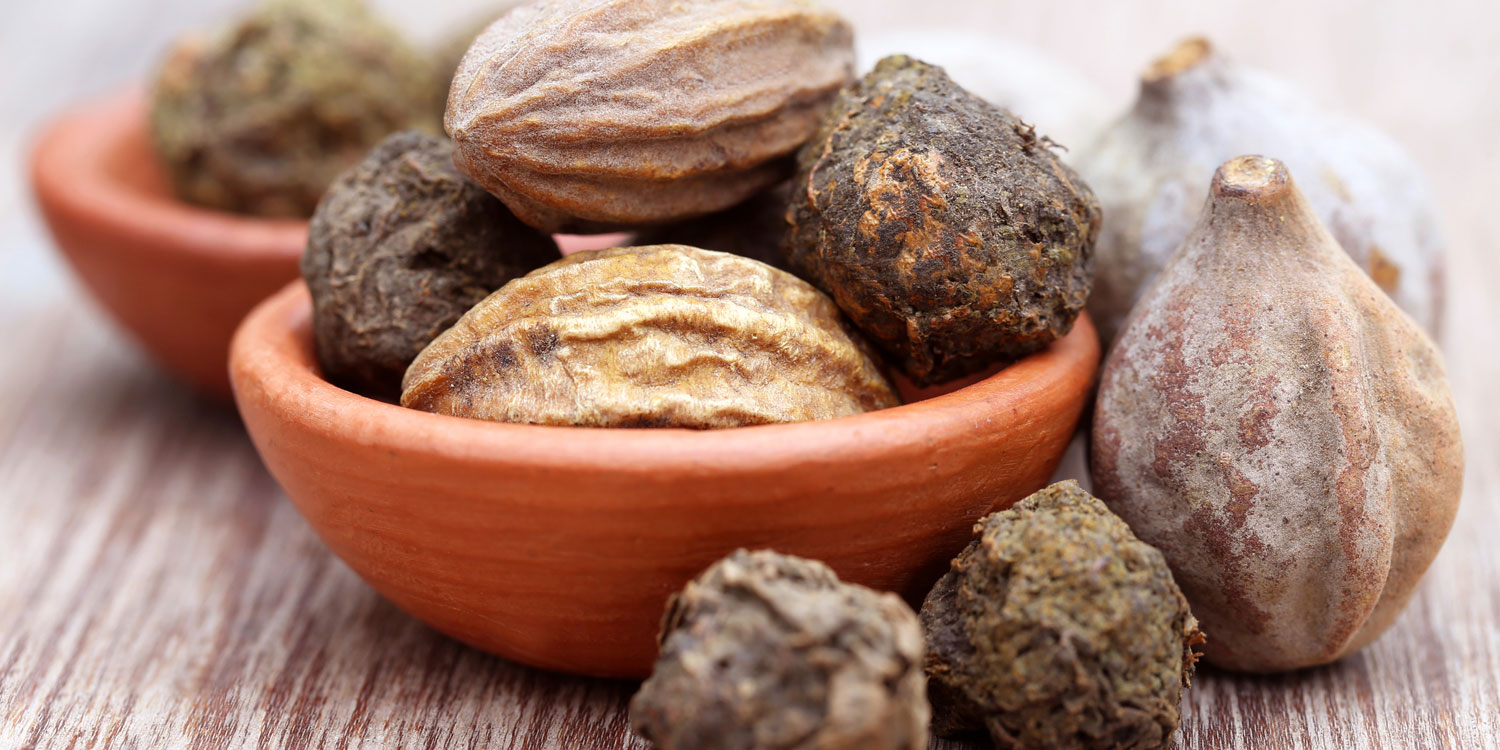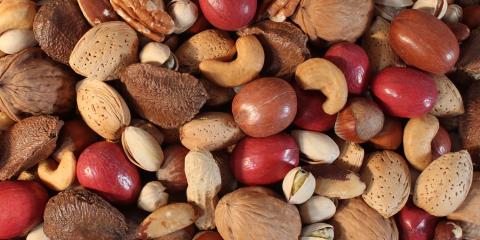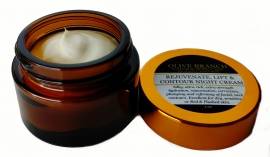Ayurveda is concerned primarily with prevention, as well as how to treat illness.
In Sanskrit, ayu and veda mean “science of life” or “life’s knowledge.”
Dravya guna is the Ayurvedic knowledge of medicinal qualities of various substances, including plants.
The Three Fruits of Triphala
Dating back thousands of years, triphala is a classic Ayurvedic herbal formula that helps rejuvenate the digestive tract and improve elimination. Composed of three fruits, it aids regulation for all three body types, or doshas.
Triphala may improve liver function and metabolism, decrease flatulence, and even help reduce excess weight. This formula does not create dependence or harm friendly intestinal flora. It is laxative, rejuvenative, and tonic.
The following are triphala’s three components.
Haritaki
In Sanskrit, haritaki means “carries away all disease.” The fruit is considered antioxidant, antiviral, astringent, expectorant, laxative (nonirritating), nervine, purgative (initially or when used alone), rejuvenative, and tonic. Due to the presence of tannins, haritaki (Terminalia chebula) helps regulate bowels and protect the mucus membranes of the stomach. It may benefit asthma, bloating, cough, edema, heartburn, hemorrhoids, indigestion, jaundice, ulcers, and other conditions.
Amla
Amla is a member of the Euphorbiaceae (Spurge) family. The common name amalaki means “mother” or “nurse” and makes reference to the herb’s many healing properties. Amla is a Hindi name; the plant is also known as emblic myrobalan, Indian gooseberry, and, in Sanskrit, amalaki and dhatri.
Amla fruit is considered antibacterial, antifungal, anti-inflammatory, antioxidant, antiviral, an aphrodisiac, a blood tonic, carminative, digestive, diuretic, hypotensive, an immune tonic, laxative, and rejuvenative, among other attributes.
Amla has been found to accelerate the regeneration of connective tissue and enhance interferon production. It has been used traditionally to improve allergies, anemia, asthma, bleeding gums, bronchitis, cancer, colds, colitis, constipation, debility, diabetes, flatulence, gastritis, gingivitis, gout, premature gray hair, hair loss, heart palpitations, hemorrhoids, hepatitis, hypertension, indigestion, jaundice, osteoporosis, scurvy, tuberculosis, vertigo, weak vision, and yeast infections.
This herb is included in some natural shampoos and conditioners to help prevent hair loss and premature color fading and in massage oils for its nourishing properties.
One amalaki the size of a plum contains about 20 times the vitamin C of an orange. It is also a useful source of bioflavonoids, niacin, calcium, vitamin E, polyphenols (gallic acid, ellagic acid), and tannins.
Bibhitaki
Bibhitaki (Terminalia belerica) is also known as behada and bhaira in Hindi. In India, this fruit is mixed with honey and consumed to improve eye health.
Bibhitaki is considered anthelmintic, anti-inflammatory, antiseptic, astringent, digestive, expectorant, laxative, rejuvenative, and tonic (for the brain and stomach).
Bibhitaki helps reduce lipid levels, thereby improving liver and heart function. Ayurvedic practitioners may use it to treat asthma, bronchitis, constipation, cough, eye diseases, fever, hair loss, laryngitis, parasites, gall and kidney stones.




